Eupectella aspergillum (Venus' flower basket)
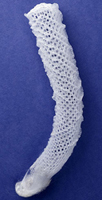
Euplectella aspergillum, the full view.
Euplectella aspergillum or Venus' flower baskets are deep sea animals. They are known as glass sponges as their bodies are entirely composed of silica.
The body structure of these animals is a tube that:
- is thin-walled
- is cylindrical
- is vase-shaped
- has a large central atrium
Glass sponges occur worldwide, predominantly at depths between 10 and 1000 metres (20-3,300 feet) where the water is very cold and the levels of silica are high.
Euplectella species are found in the deep Southern Pacific around the coast of Japan and Philippines and more recently new species have been found off Australia.
Species detail
History

Euplectella aspergillum, Venus' flower basket, was first described by Richard Owen in 1841 in the Transactions of the Zoological Society.
Richard Owen was the first Director of the Natural History Museum when it moved to South Kensington and the man who coined the term 'dinosaur'.
-

Taxonomy
Euplectella aspergillum is a thin-walled, cylindrical, vase-shaped tube with a large central atrium. The body is composed entirely of silica in the form of 6-pointed siliceous spicules, which is why they are commonly known as glass sponges. Find out more about the form and function of this delicate-looking creature.
-

Habitat and distribution
Euplectella aspergillum are marine animals found at depths of between 10 and 1000 metres where the water is very cold (2-11o C) and has high levels of dissolved silica. Find out more about where in the world these animals are found.
-

Behaviour and biology
Sponges are individual animals not colonial like corals.They are filter feeders creating a current to draw water in through their tissues and filter out any small particles of food. Find out more about the habits and biology of the Venus' flower basket.
-

History
Euplectella aspergillum are marine animals found at depths of between 10 and 1000 metres (20 -3,300 feet) where the water is very cold (32-52o F or 2-11o C) and has high levels of dissolved silica. Find out more about where in the world these animals are located.
-

Uses
In Japan these sponges are given as good luck charms, like horseshoes, to couples getting married. Discover more about this tradition and the other uses for Venus' flower basket.
-

References
Get reference material Venus’ Flower-basket Euplectella aspergillum.
Images
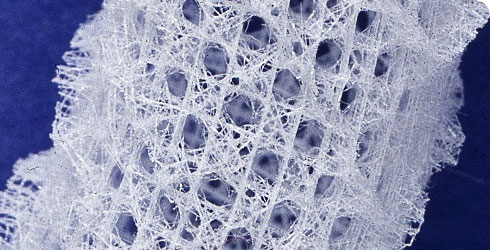
Euplectella aspergillum a bleached skeleton of the deep-water glass sponge held in the Museums collection it is the holotype first described by Sir Richard Owen in 1841.
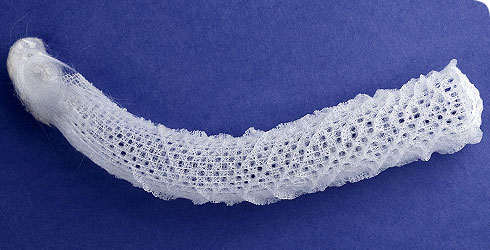
Euplectella aspergillum a bleached skeleton of the deep-water glass sponge held in the Museums collection it is the holotype first described by Sir Richard Owen in 1841.
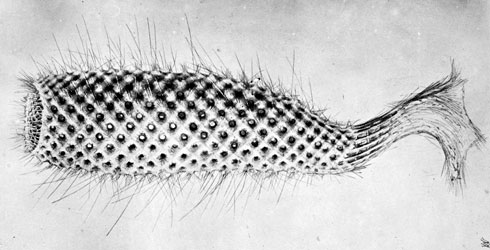
Glass sponge probably Euplectella suberea. Drawing made from several damaged specimens collected during The Voyage of H.M.S. Challenger (1872-1876) west of Gibraltar, between Pernambuco & Bahia, S. America.
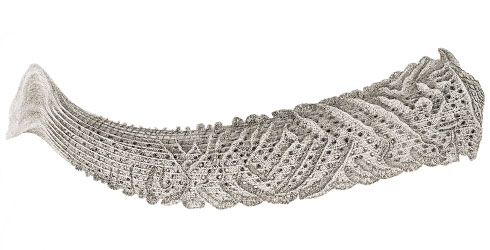
Euplectella aspergillum illustration from 'Transactions of the Zoological Society', Vol 3, Part 2, 1841. Illustration on display in the Darwin Centre at the Natural History Museum, London.
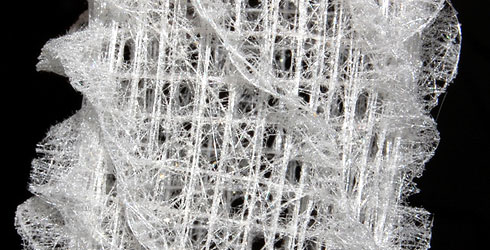
A close up of the structure of Euplectella aspergillum Venus' flower basket.
© Ryan M. Moody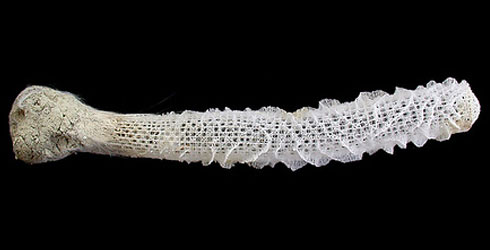
Euplectella aspergillum
© Ryan M. Moody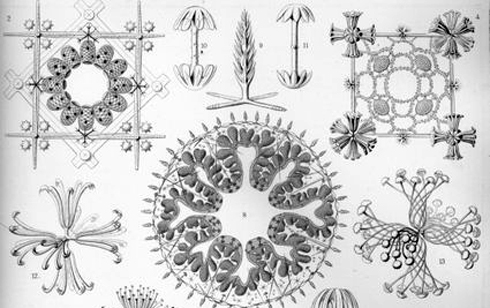
An illustration of Hexactinellae by Haeckel
About the author
Toolbox
Glossary
Conchologists is a person who studies the branch of zoology that deals with the study of molluscs, specifically their shells.
Type specimen is a specimen selected to serve as a reference point when a species is first named. As a result, these specimens are extremely important to scientists who are attempting to determine the correct application of a name.
Holotype is the single specimen which is used to define the characteristics for a new species by an author and is therefore designated as the type specimen by the author at the time of publication of that description.
Museum specimen in focus
Registration number: BMNH 1894.8.2.1 Holotype

